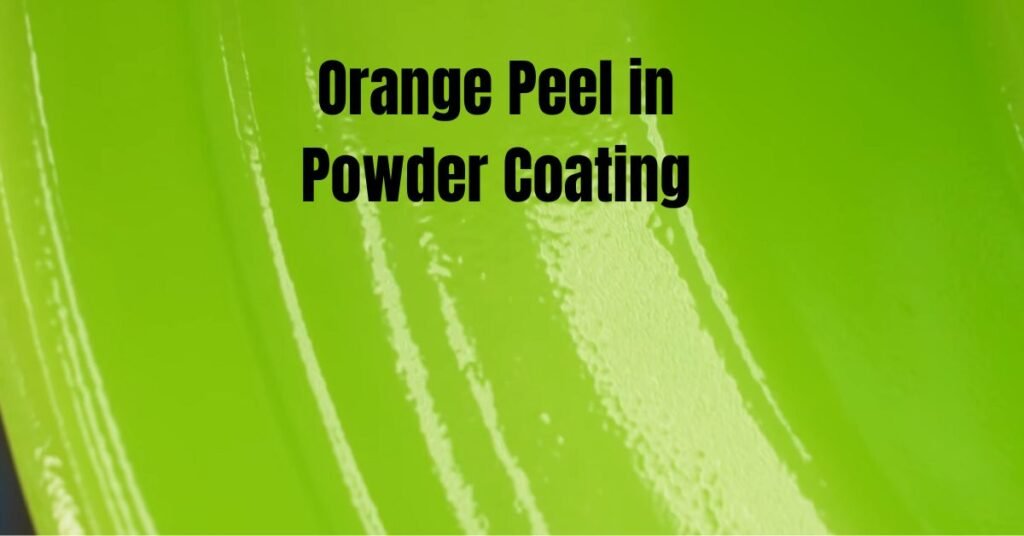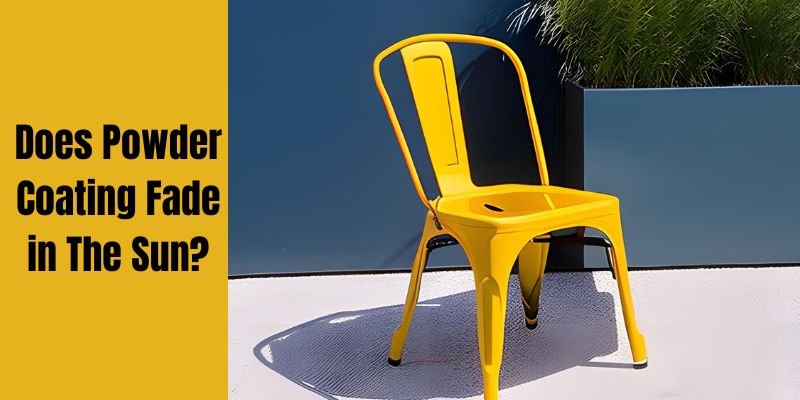Is powder coated steel rust-proof? It’s the burning question on everyone’s mind when it comes to choosing durable and reliable materials for various applications. In this guide, we’ll dive deep into the world of powder coated steel to unravel its hidden capabilities in combating rust and corrosion.

Is Powder Coated Steel Rust Proof?
Powder coated steel is highly resistant to rust and corrosion, making it an excellent choice for various applications. The powder coating process involves applying a dry powder to the steel surface, which is then cured through heat to form a protective and durable finish.
The Powder Coating Process
- Surface Preparation: The steel surface is cleaned, degreased, and sometimes treated with a phosphate solution to enhance adhesion.
- Powder Application: The dry powder is electrostatically applied to the steel surface, creating a uniform and adhesive layer.
- Curing: The coated steel is heated in an oven, where the powder particles melt and fuse together to form a smooth and continuous coating.
Powder Coating’s Rust Protection
- The powder coating creates a barrier on the steel surface, preventing moisture and oxygen from reaching the underlying metal. This barrier effectively shields the steel from rust and corrosion.
- Additionally, the powder coating material itself often contains additives that enhance its anti-corrosion properties.
While powder coated steel is highly resistant to rust, its level of protection can be influenced by factors such as the quality of the powder coating application, environmental conditions, and the presence of any damage or scratches to the coating.
How Does Powder Coating Protect Steel from Rust?
Powder coating offers robust protection against rust and corrosion for steel surfaces. The key mechanisms that contribute to this protection include:
Barrier Protection
The cured powder coating forms a continuous and impermeable barrier over the steel surface. This barrier prevents moisture, oxygen, and corrosive elements from reaching the underlying metal, thus inhibiting rust formation.
Adhesion and Durability
The electrostatic application of the powder ensures strong adhesion to the steel, creating a durable and long-lasting protective layer. The coating can withstand exposure to various weather conditions and environmental factors.
Chemical Composition
Some powder coatings contain specialized additives that enhance their anti-corrosion properties. These additives provide an extra layer of protection against rust and corrosion.
Versatility
Powder coating can be applied to steel of various shapes and sizes, including complex structures and components, ensuring comprehensive protection for all surfaces.
It’s important to note that proper surface preparation and high-quality powder coating application are essential for achieving optimal rust protection.
Can Powder Coating Wear Off Over Time and Expose Steel to Rust?
While powder coating provides robust rust protection, it is not entirely immune to wear and damage. Over time, various factors can lead to the degradation of the powder coating, potentially exposing the steel surface to rust.
Factors That Can Affect Powder Coating Integrity
- Environmental Exposure: Exposure to UV radiation, harsh weather conditions, and pollutants can gradually break down the powder coating’s protective properties.
- Mechanical Damage: Abrasion, impact, or scratching can damage the powder coating, compromising its ability to shield the steel from rust.
- Chemical Exposure: Contact with certain chemicals or solvents may weaken the powder coating and lead to corrosion.
- Improper Application: Inadequate surface preparation or curing during the powder coating process can result in poor adhesion and reduced durability.
To ensure long-lasting rust protection, it is essential to inspect powder coated surfaces regularly for signs of damage and perform any necessary touch-ups or maintenance. Proper care and maintenance can significantly extend the life of the powder coating and enhance its anti-corrosion properties.
Benefits of Using Powder Coated Steel in Outdoor Applications
Using powder coated steel in outdoor applications offers numerous benefits, primarily due to its exceptional rust resistance and durability:
Corrosion Resistance
Powder coated steel is highly resistant to rust and corrosion, making it ideal for outdoor structures and equipment exposed to varying weather conditions.
Longevity
The durable powder coating can extend the life of steel components, reducing the need for frequent replacements and repairs.
Aesthetics
Powder coating is available in a wide range of colors and finishes, allowing for customizing outdoor structures and products to match their surroundings.
Environmental Friendliness
Powder coating is a more environmentally friendly option than traditional paint since it does not contain harmful solvents or emit volatile organic compounds (VOCs).
Weather Resistance
Powder coated steel can withstand harsh UV exposure, temperature fluctuations, and moisture without deteriorating or fading.
Reduced Maintenance
The low-maintenance nature of powder coated steel minimizes the need for regular upkeep and repainting.
Overall, using powder coated steel in outdoor applications provides not only rust protection but also an attractive and durable finish that enhances the longevity of the steel components.
Is Powder Coating Suitable for Marine Environments to Prevent Rust?
Powder coating is a suitable anti-corrosion treatment for steel used in marine environments. Marine environments are known for their corrosive nature due to high levels of saltwater exposure and humidity. Powder coating can effectively protect steel structures, equipment, and components from the corrosive effects of seawater and salty air.
Benefits of Powder Coating for Marine Environments
- Superior Rust Resistance: Powder coated steel creates a robust barrier against saltwater and corrosive elements, preventing rust formation.
- Durability: Powder coating offers excellent durability, ensuring long-lasting protection even in harsh marine conditions.
- Scratch Resistance: Powder coating can provide added scratch resistance, which is beneficial in marine environments where equipment may be subject to abrasive contact.
- Uniform Coverage: Powder coating adheres uniformly to steel surfaces, even complex shapes and structures common in marine applications.
While powder coating provides effective rust protection in marine environments, regular inspection and maintenance are essential to address any potential damage or wear that may occur over time.
Can Scratched or Damaged Powder Coating Lead to Rust on Steel Surfaces?
Yes, scratched or damaged powder coating can lead to rust on steel surfaces. When the powder coating is compromised, it exposes the steel to direct contact with moisture and oxygen, allowing rust to develop.
Factors Contributing to Rust on Damaged Powder Coating
- Moisture Penetration: Water can seep into the scratches or damaged areas of the powder coating, leading to localized rusting on the exposed steel surface.
- Oxygen Exposure: Oxygen from the surrounding air can interact with the steel in the scratched areas, initiating the corrosion process.
- Accelerated Corrosion: Rust development may be accelerated at the site of damage, spreading to adjacent areas if not addressed quickly.
To prevent rust from spreading on damaged powder coating, it is crucial to address scratches or chips as soon as they are noticed. Quick touch-up and repair of the damaged coating can effectively protect the steel surface from further corrosion.
Maintenance Requirements for Powder Coated Steel to Prevent Rust
Proper maintenance is essential to ensure the long-term rust protection of powder coated steel. Here are some maintenance tips:
1. Regular Inspections: Conduct routine inspections to identify any signs of damage, scratches, or corrosion on the powder coating.
2. Quick Repairs: Address any damages or scratches on the powder coating quickly to prevent rust formation on the exposed steel.
3. Cleaning: Regularly clean the powder coated surface using mild detergent and water to remove dirt, debris, and contaminants.
4. Avoid Abrasives: Do not use abrasive cleaning materials or harsh chemicals that could damage the powder coating.
5. Touch-ups: Perform touch-up applications on small damaged areas using matching powder coating materials.
6. Protective Coatings: Consider adding additional protective coatings, such as clear coats or sealants, to enhance the powder coating’s durability and longevity.
By following these maintenance practices, users can prolong the life of powder coated steel and maintain its rust-resistant properties.
How Does Powder Coated Steel Compare to Other Anti-Corrosion Treatments for Steel?
Powder coated steel offers several advantages when compared to other anti-corrosion treatments for steel:
Durability
Powder coating provides a more durable and long-lasting finish compared to traditional paint, making it ideal for outdoor applications.
Eco-Friendly
Unlike traditional paint that contains solvents and VOCs, powder coating is an environmentally friendly option.
Uniformity
Powder coating adheres uniformly to the steel surface, providing a seamless and consistent finish.
No Drips or Runs
The powder coating process eliminates the risk of drips or runs, ensuring a smooth and professional appearance.
Faster Curing
Powder coating cures more quickly than some other coatings, reducing production time.
Resistance to Fading
Powder coating maintains its color and appearance for an extended period, even when exposed to UV radiation.
While other anti-corrosion treatments, such as galvanization or metal plating, offer their benefits, powder coating remains a popular choice for its overall effectiveness, aesthetic appeal, and environmental advantages.
Limitations and Considerations When Using Powder Coated Steel in Corrosive Environments
While powder coated steel provides excellent rust protection, there are some limitations and considerations to keep in mind:
Damage and Scratches: Damaged or scratched powder coating can expose the steel to rust, emphasizing the importance of regular inspections and quick repairs.
Edge Coverage: The edges of powder coated steel may be more vulnerable to rust, as the coating thickness may be thinner at these points.
Marine Environments: Although suitable for marine applications, powder coated steel in marine environments may require more frequent maintenance due to the harsh conditions.
Pre-Treatment: Proper surface preparation before powder coating is crucial to ensure good adhesion and long-lasting protection.
Temperature Limitations: Some powder coatings may have temperature limitations, affecting their use in high-temperature or extreme heat environments.
Chemical Exposure: Certain chemicals may degrade the powder coating and compromise its anti-corrosion properties.
By understanding these limitations and taking necessary precautions, users can make informed decisions when using powder coated steel in corrosive environments, ensuring effective rust protection and optimal performance.
Final Thoughts
Powder coated steel offers robust protection against rust and corrosion, making it a popular choice for a wide range of applications. The powder coating process creates a durable barrier that shields steel surfaces from moisture, oxygen, and corrosive elements, preventing rust formation.
However, maintaining the integrity of the powder coating is essential to prevent rust on steel surfaces. Regular inspections, quick repairs, and proper maintenance are key to ensuring long-lasting rust protection.
While powder coated steel compares favorably to other anti-corrosion treatments, it is essential to consider the specific environmental conditions and application requirements when using powder coated steel in corrosive environments. Overall, powder coated steel’s rust resistance, durability, and aesthetic appeal make it a reliable and effective choice for various indoor and outdoor applications, providing long-lasting protection and enhanced longevity for steel components.


